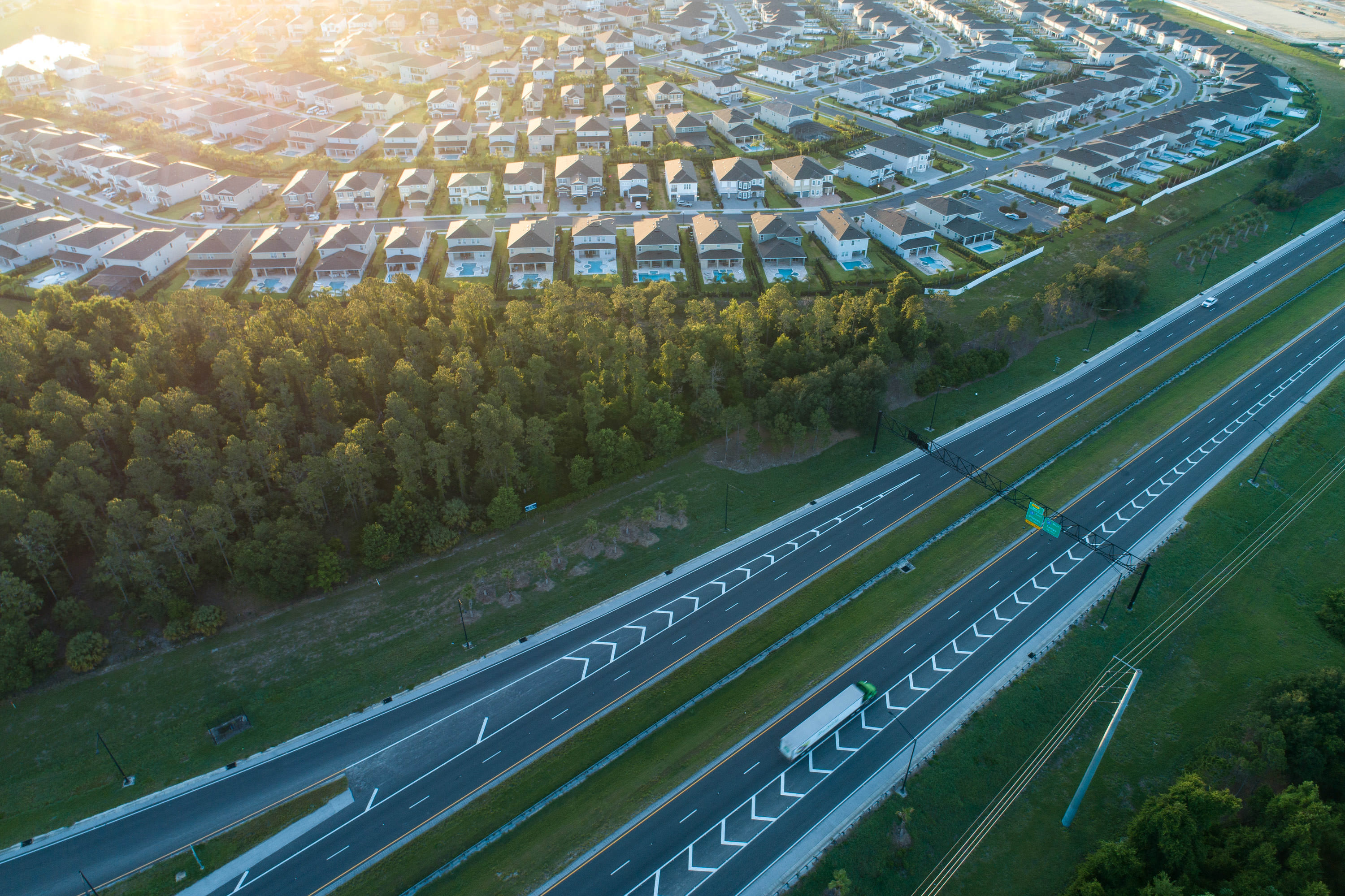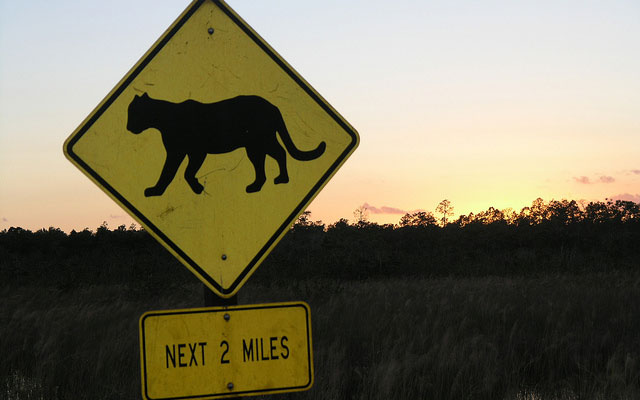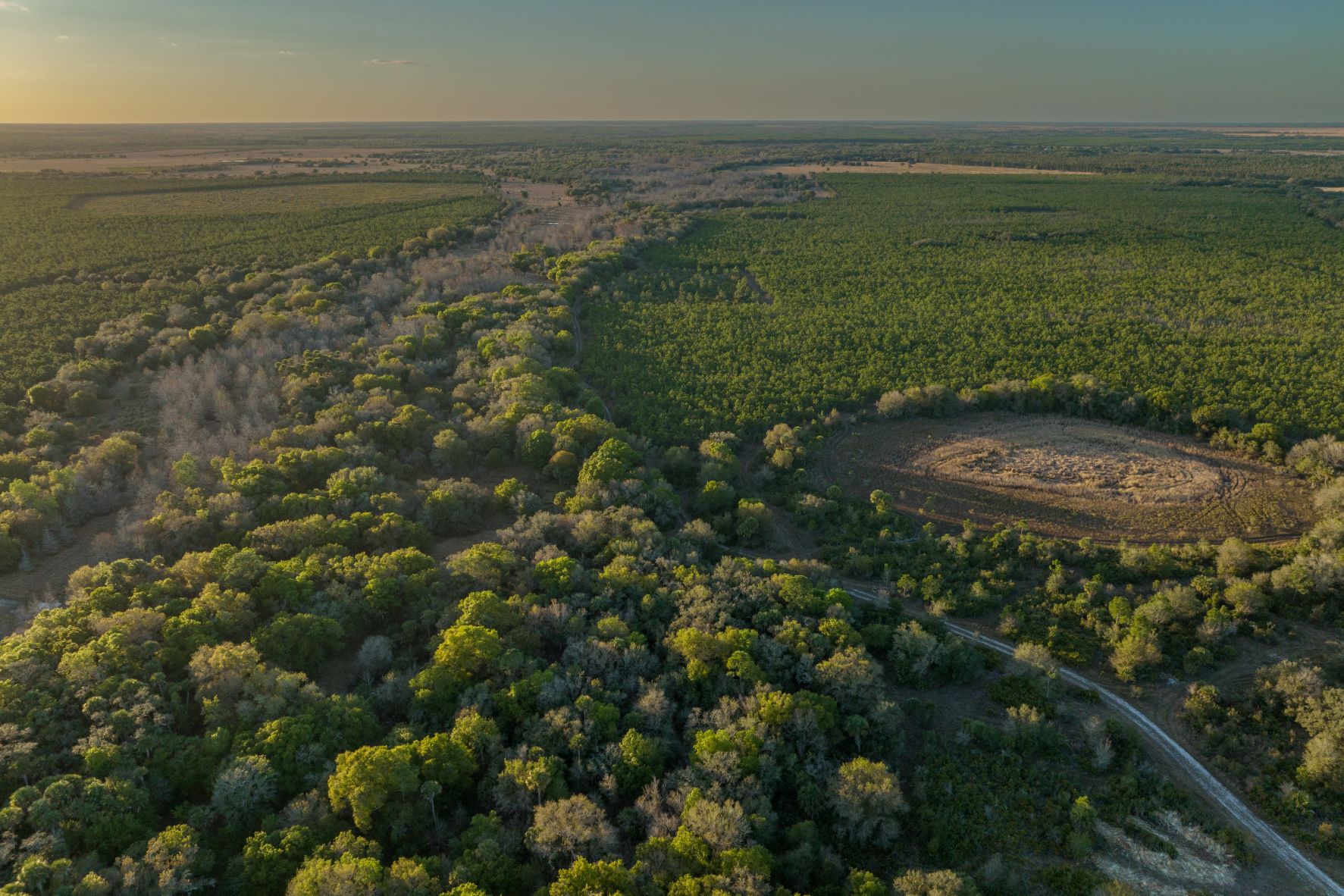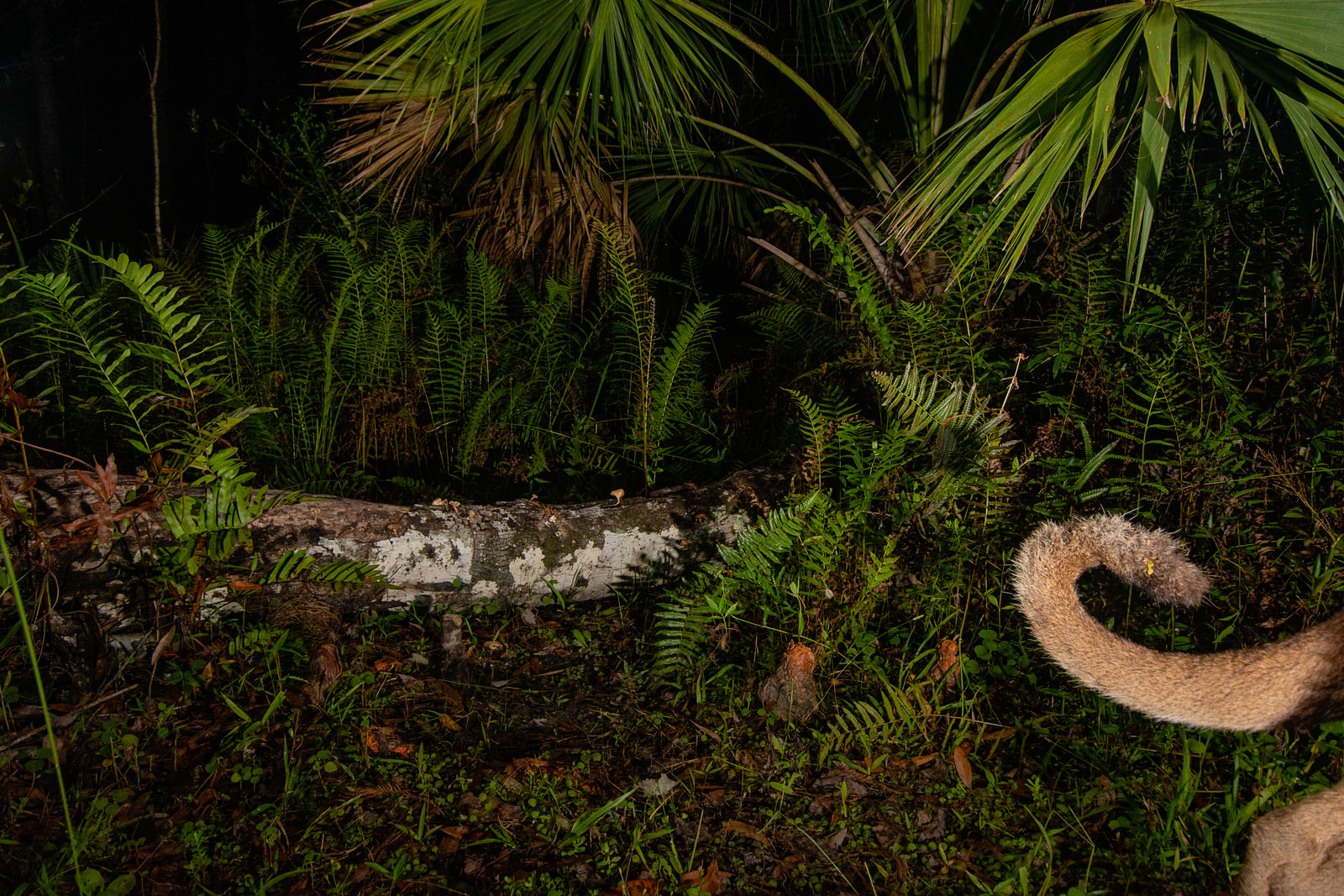Florida Panther
Facts about the Florida panther and how we’re helping protect this elusive and critically endangered species.

Florida Panther Facts
- Scientific name: Puma concolor coryi
- Conservation status: Federally endangered
- Size: 6-7 feet long (1.8-2.1 meters)
- Weight: 70-160 lbs (30-75 kg)
- Lifespan: 12 years in the wild
- Population: 120-230 adults & subadults
Panther, puma, mountain lion or cougar? What is the Florida panther?
The Puma is known as the big cat of the Americas. At one time, pumas could be found in a wide variety of habitats and climates, ranging from the northern reaches of Canada to the tip of South America. Indigenous peoples and explorers referred to the big cats as mountain lions, pumas, catamounts, panthers, and cougars.


Ghost Cat
How do you photograph an animal as elusive as the Florida panther?
How a full-time panther photographer does itModern day hunting and habitat destruction and fragmentation reduced the puma's range by about half. The resulting population isolation created six recognized subspecies of Puma concolor. The Florida panther, Puma concolor coryi, is a subspecies that is only found in southern Florida and nowhere else on Earth. The Florida panther is a cat of secrecy: rarely seen and with an estimated population of only around 200 adults and subadults, it's one of the most endangered mammals in the country.
Like other Puma species, the Florida panther is typically a tawny-beige color with a whitish-gray belly and black tips on the tail, ears, and nose. Adult males can weigh from 100 to 160 pounds (45-75 kg), while females weigh between 70 and 100 pounds (30 to 45 kg). Adult Florida panthers are six to seven feet (1.8-2.1 meters) long from nose to tail and have the ability to leap up to 15 feet (4.5 meters) vertically and 45 feet (14 meters) horizontally! Litter size ranges from one to four kittens born in a den created by the female. Young are camouflaged with spots which fade away between six and eight months of age.
Florida Panther Habitat and Diet
Florida panthers use a variety of habitats, such as wetlands, swamps, upland forests, pastures and citrus groves. Yet to truly thrive, they need dense, mature upland forests, and lots of them. Adult males require territories of about 200 square miles (520 square km), while female panthers need home ranges of about 75 square miles (195 square km).

Fun Fact #1
Florida's state animal is the Florida panther!
The Florida panther diet is primarily white-tailed deer and feral hogs, which live in more upland forested areas. To maintain their health, panthers need to eat at least one large meal every week. Females with kittens require about twice this amount. However, they will eat smaller prey such as raccoons, armadillo, rabbits, birds, and even alligators when nothing else is available. Panthers living in the vast wetlands of the Florida Everglades are forced to subsist on small prey and tend to be smaller in size as a result.
One hundred years ago, Florida panthers could be found roaming throughout the Gulf states and beyond, including Georgia, Alabama, Mississippi, Louisiana, Arkansas, and even Tennessee and South Carolina. Today, Florida panthers are living on less than 5% of their historic range. They occur in portions of a handful of counties in south, southwest and south-central Florida.
Why is the Florida panther endangered?
Florida panthers face a lot of serious threats, and most of them can be traced back to habitat loss and fragmentation. Urban sprawl, converting diverse agricultural land to monocultures or residential and commercial development, and new roads and highways that make it difficult for Florida panthers to find enough territory, prey, and mates. Even pollution, disease, and their lingering genetic abnormalities are tied to habitat loss and fragmentation.
Florida panthers used to be plentiful in Florida and across the southeastern United States. In the early 1800s, they were thought to be a threat to livestock and game animals, so officials placed a bounty on them. They were hunted almost to extinction by the 1950s.

But that wasn’t all. Dead panthers were then discovered with mercury poisoning. Mercury had made its way to the Everglades through industrial pollution, where fish absorbed it from the water. Raccoons ate the fish and Florida panthers ate the raccoons, compounding the mercury to lethal levels. Technology in 1989 reduced pollution from industrial applications, but by 1995 there were fewer than 30 Florida panthers left.
Fun Fact #2
Even though the Florida panther, like other puma species, is a big cat, they can't roar! They yowl, hiss, growl, and even purr like a housecat.
Genetic diversity is a significant issue with such low population numbers. In an attempt to save the Florida panthers, eight panthers from Texas were brought in to supplement the gene pool. The plan worked! By 2007 the Florida panther population had tripled to an estimated 100 individuals that were more genetically resilient.
Unfortunately again, biologists have recently documented a new neurological disorder afflicting some Florida panthers and bobcats that causes varying degrees of rear leg weakness and difficulty walking. Monitoring efforts are ongoing.
As if all of these problems weren't enough, many Florida panthers face daily challenges of crossing busy roads and highways in the fight for survival. Between 2014 and 2023, 80% of panther fatalities were from vehicles.
What TNC Is Doing to Help Save the Florida Panther
While efforts to breed genetic diversity back into Florida panthers were successful, these results won't last unless panthers are able to expand their territories into additional suitable habitat. Habitat loss and fragmentation due to development remains the main threat to Florida panthers today. This lack of habitat and related factors, including genetic abnormalities, highway deaths, and disease, threaten the survival of Florida's beloved state animal.

The Nature Conservancy has long recognized the need to establish new and expand existing wildlife corridors and have worked for over 30 years to protect land for the Florida panther to thrive into the future.
The Caloosahatchee River is a critical link for panthers to naturally migrate from south of the river into the ranching and natural lands north of the river. TNC and partners purchased conservation easements on over 2,800 acres on the south side of the river in 2015. In 2017, TNC announced the first protected tract on the northern bank of the Caloosahatchee River, Cypress Creek Grove. This tract abuts to lands that the state of Florida are currently working to protect.
These important locations are safeguarded from future development and will provide protected lands for panthers to safely move northward to hopefully expand their range into central Florida.
Lands we helped protect for the Florida panther
- Arbuckle Creek Watershed
- Big Cypress National Preserve
- Caloosahatchee Ecoscape
- Chaparral Slough
- Corkscrew Regional Ecosystem Watershed
- Devil's Garden
- Fakahatchee Strand Preserve State Park
- Fisheating Creek Ecosystem
- Kissimmee Prairie Preserve State Park
- Kissimmee St. Johns Connector
- Lake Wales Ridge Ecosystem
- Okaloacoochee Slough
- Old Town Creek Watershed
- Panther Glades
- Pine Island Slough
- Twelvemile Slough
The Florida panther is an umbrella species
Florida panthers are Florida's widest ranging land animal and their large territories are shared with many other species, creating an umbrella effect. When we protect land and wildlife corridors for Florida panthers, we also provide protection benefits for other rare and iconinc species that call panther habitat home. Some of these other species include the gopher tortoise, scrub jay, eastern indigo snake, red-cockaded woodpecker, and black bear. Humans also gain from protected panther habitat through enhanced and properly functioning ecosystems.

How can you help protect Florida panthers?
With so few panthers in Florida, we need everyone's help to protect this iconic animal. Here are some actions you can take to raise awareness and help protect the Florida panther:
- Drive slowly and be alert on highways, especially at dawn and dusk.
- Donate to help the Florida panther.
- The next time you renew your motor vehicle tag, purchase a "Protect a Panther" license plate. Funds from these license plate fees support Florida panther research.
More Nature in Your Inbox
Get the best nature stories, news, and opportunities delivered monthly.





